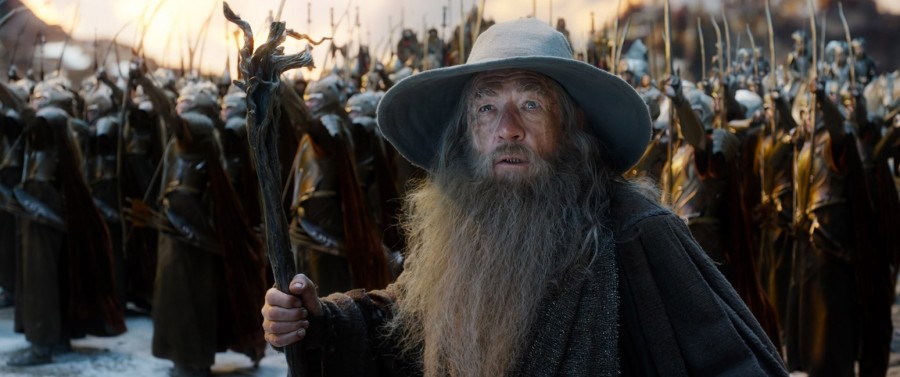Movie Review: The Hobbit: The Battle of the Five Armies
January 24, 2015
In the third and final installment of The Hobbit film adaptations, “The Hobbit: The Battle of the Five Armies” directed by Peter Jackson, the company of Thorin Oakenshield (Richard Armitage) battle orcs, elves, and their lust for all things gold that drives them to the brink of self destruction.
The opening scenes present an intense atmosphere for the rest of the film aided by another wonderful battle when Bard the Bowman (Luke Evans) finally fells Smaug the Magnificent (Benedict Cumberbatch) with the help of his young son, Bain (John Bell). The dragon by itself is terrifying as he breathes flame down upon the populace, but Cumberbatch’s voice performance only adds to the beast.
The troubles for the people of Lake-town are far from over though, and we are shown the true scale of Smaug’s devastation in one of the most poignant scenes of the franchise as survivors sift through the bodies of the fallen and drag the wounded to shore while what’s left of the city smokes in the background.
The score, written by Howard Shore, who also wrote the scores for the rest of the Lord of the Rings franchise films, is another high point to the film. Fans will recognize old staples to the series, but Shore still managed to insert a distinct new flare for the final Hobbit film.
Unfortunately, viewers may soon find themselves paying more attention to the questionable CGI than to the hardships the characters face. In order to fully depict the grand scale of the interior of the dwarf kingdom, the scenes were mostly shot in front of a green screen, and regrettably, it is obvious.
Other bits of poorly executed CGI dot the rest of the film as well, the biggest being a scene depicting a conversation between Bard, on a horse, and Thorin, who is standing high above on the ramparts. The perspective is slightly off, and the walls and ramparts lack any sort of physical depth.
The CGI for the rest of the film is less noticeable, but still far more present than fans of the last franchise would like to have seen. The love triangle between Kíli (Aidan Turner), Tauriel (Evangiline Lilly), and Legolas (Orlando Bloom) was also a low point. There wasn’t nearly enough time devoted to fleshing it out and it falls flat as a result.
However, despite its flaws, it was still an enjoyable film overall. It provided excellent foreshadowing to certain events in “The Lord of the Rings,” and the return of Legolas’ crazy elfish stunts was especially entertaining. As is typical for the elf, he single-handedly took on trolls, giant bats and even gravity before the credits rolled.
The end of this film is undeniably bittersweet as “The Hobbit: The Battle of the Five Armies” is the end of not only The Hobbit trilogy, but our time in Middle Earth. If you liked the previous Hobbit movies, then you’ll definitely like this one as well. If you didn’t, it might be worth checking anyway, as it’s definitely the best of the three.



